Risky thesis - everyone knows that Mirosław Hermaszewski was the only Pole in space. And yet, without some Polish scientists and constructors, the conquest of extraterrestrial space would be impossible. Haven't heard of them? It's high time to change that!
Every Pole knows the name of Hermaszewski. In 1978, as a representative of the fourth country in the world, he flew into orbit and worked for a week at the Soviet space station Salut-6. The more informed have heard about the Lem nanosatellite, used for star observation, and its predecessor PW-Sat. Someone may hear information about the work on panels and antennas on the ISS. But did it matter so much that the question posed in the title was answered in the negative?
Well, maybe it was really bad with our compatriots in space. But there are people who have contributed far more to the space program than the flight itself .
Before we took off…
Without a doubt, the first name that comes to mind is Konstanty Ciołkowski . This son of a Polish exile over a hundred years ago, when technology did not allow people to even fly freely, developed the foundations of modern cosmonautics .
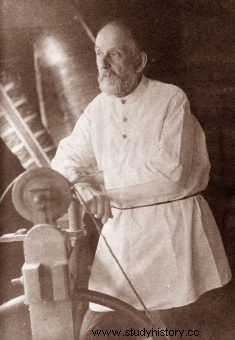
Konstantin Ciołkowski - thanks to his involvement in the development of space rockets, one of the lunar craters was named after him (source:public domain).
His ideas included the concept of the so-called "rocket train" that is, multi-stage vehicles - exactly as used today in space flights. He also developed plans for the orbital stations, although these in the proposed shape have never been implemented. The problem is that Ciołkowski himself, after his mother, considered himself a Russian ...
Lunar Aviator
However, even excluding Ciołkowski, the list of Poles who contributed to "leaving the cradle of reason" is longer than most suppose! Certainly one of the more interesting characters was born in Opole in 1918 Werner Ryszard Kirchner . He studied, among others, at the Lviv Polytechnic, and learned to fly RWD-8 planes at the local aero club.
During World War II, he fought in the West as a pilot, and after the end of hostilities, he settled in England, from where he quickly managed to leave for the United States. There, after graduating from MIT, he began work on rocket fuel. He collaborated with the "father" of the American space program Wernher von Braun, contributing to the creation of the first American artificial satellite Explorer I.
He also participated in the work on the Apollo capsule and on the fuel for the lunar lander - the reliability of this system depended on the successful return of astronauts from the surface of the Silver Globe. In the event of its failure, they would be sure to die. Kirchner also led the team developing the Earth-to-Lunar orbit change maneuver .
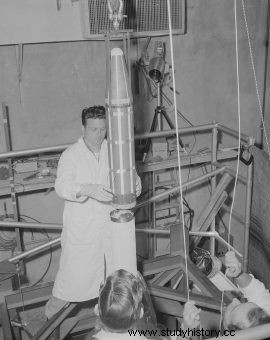
Work on the first American artificial satellite in progress ... (source:public domain).
Without these works, the Apollo ships would never have made it anywhere near our natural satellite as technology still does not allow people to fly directly and the Hohmann-Vietchinkin transfer maneuver is necessary. Its execution requires a series of complex, very precise movements, which in space flight conditions are extremely difficult due to the limited amounts of fuel and the ability to steer the ship.
Kirchner's achievements were appreciated by astronauts - Neil Armstrong and Edwin Aldrin, the first people on the moon, personally thanked him for the success of the Apollo 11 mission during a visit to the president of the USA.
Work full of tension
The fate of Eugeniusz Lachocki was similar , born in 1921. After the Soviet occupation of the eastern borderlands of the Second Polish Republic, he ended up in Kazakhstan. In the local state farm he was responsible for electrical works and power supply. From there, he traveled to the West with the Anders Army, and then, in 1952, he settled with his wife in America.
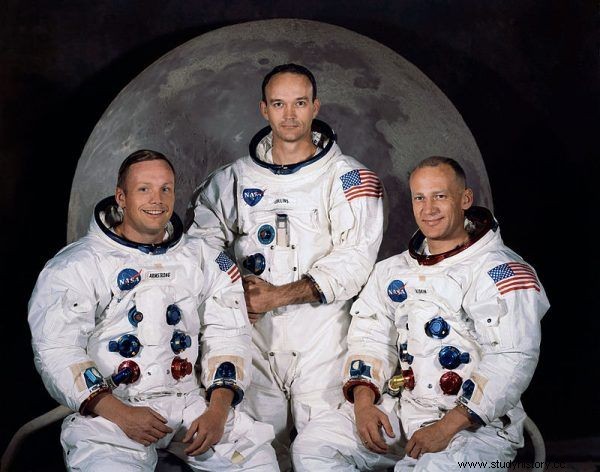
The Apollo 11 crew. From the left Neil Armstrong, Michael Collins and Buzz Aldrin. Without Werner Ryszard Kirchner, their mission would not have been successful (source:public domain).
In the United States, he continued his work on electricity. He was responsible for the development of power supplies for Apollo devices . It was a difficult task because modern and not very popular at that time cells were used.
Despite many advantages, such as quick readiness to work and low emission of pollutants, modern solutions caused designers many problems - as a new technology they were poorly known and less proven in practical conditions.
Lachocki, however, managed to design systems that would allow the use of these high-performance cells in space flights. Not only the capsules themselves are equipped with power supplies, but also the lunar rovers (developed by another Pole, Mieczysław Bekker - more on that in a moment).

The lunar rover "at work" during the Apollo 15 mission. In the photo Jim Irwin - the eighth man to walk on the surface of the moon (source:public domain).
NASA appreciated their reliability and performance. Lachocki was also entrusted with the development of power systems for the space shuttles of the STS program . All the shuttles flew into orbit with our countryman's reliable and failure-free systems.
Four circles on the Silver Globe
The aforementioned lunar rover, the so-called Lunar Roving Vehicle (abbreviated as LRV), was developed by Mieczysław Bekker .
Bekker was born in 1905 near Hrubieszów, during his school years he moved to Konin. He showed an outstanding interest in mathematics, he practiced writing formulas and tasks on a wooden gate in the yard.
After graduating from high school, he started studies at the Warsaw University of Technology in the automotive specialty. Before the war, he lectured at the Military Study of the Warsaw University of Technology, School of Military Engineering in Warsaw and worked at the Military Institute of Engineering Research.
The turmoil of war threw him first to France, and then in 1942 he was invited to Canada, where he worked in the Armored Weapons Research Bureau . There, he initiated work on "off-road" vehicles designed to move off the designated roads in any terrain.
In 1953 he joined the Canadian army, a year later he started working with the US Army, and in 1956 he moved to the United States, where he continued his work. In the same year he published his first book "Theory of ground locomotion".
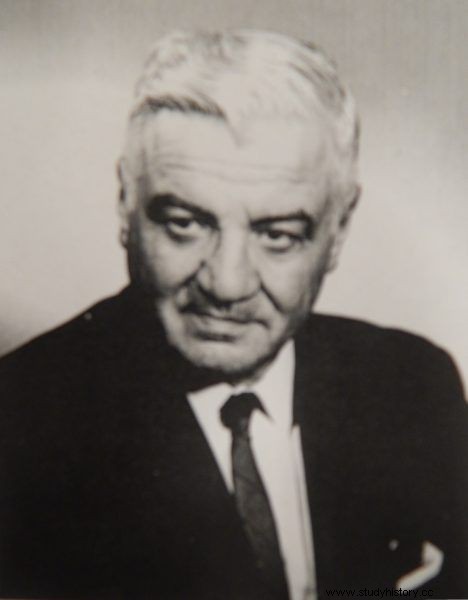
Mieczysław Bekker himself. A photo from Marek Borucki's book titled "Great Forgotten. Poles who changed the world ", part 2 (source:the collection of the T. Kościuszko Secondary School in Konin).
In 1961, he joined General Motors. He joined the company for the lunar rover competition announced in the same year by NASA and, having defeated over eighty other companies, won .
The Lunar Roving Vehicle project was completed in a record time of seventeen months. The biggest problem was to develop wheels that would not get bogged down in the lunar dust - Bekker's experience and knowledge paid off here.
Three vehicles constructed by a team led by a Polish engineer flew to the moon in the Apollo 15, 16 and 17. As Marek Borucki emphasizes in his book:
According to all the astronauts who participated in the three expeditions, the vehicles did an excellent job , they were very maneuverable, they climbed the slopes perfectly, reached places that a man in a heavy suit would never reach.
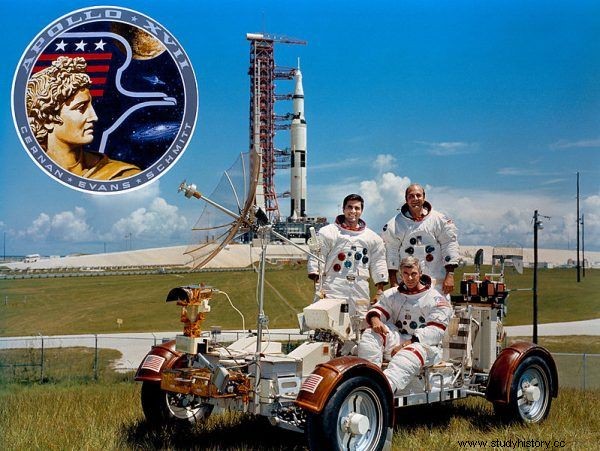
The Apollo 17 crew before takeoff and the legendary LVR vehicle. From the left:Harrison Schmitt, Ronald Evans. Eugene Cernan (source:public domain) sits in the vehicle.
This directly translated into a much greater scope of the research carried out and much better sets of samples. Eugene Cernan, Apollo 17 mission commander said:
The rover was so versatile and gave us such an advantage in the time we had on the moon that without it our scientific and geological knowledge would be 70% less . It was a phenomenal achievement.
An interesting fact is that among the projects defeated by Bekker there was another one, also created by a Pole. Stanisław Rogalski because we are talking about him, he was a lecturer at the Warsaw University of Technology and an aerospace engineer. Together with Jerzy Drzewiecki and Stanisław Wigura, they founded the RWD design company.
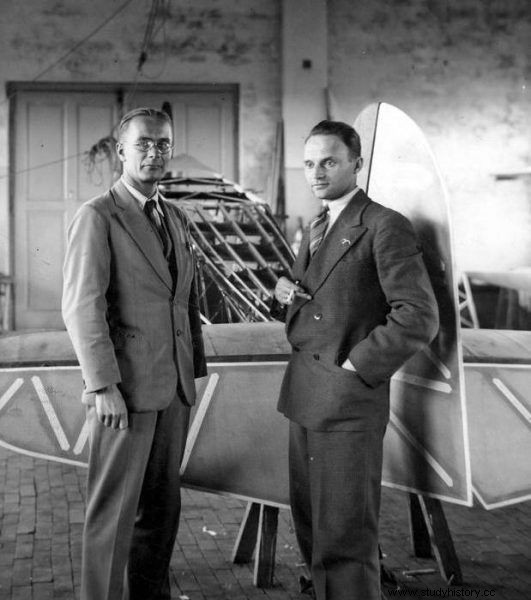
Jerzy Drzewiecki (left) and Stanisław Rogalski (right) in a photo from the 1930s (source:public domain).
During the war, Rogalski ended up in France and England, and in 1949 he emigrated to the USA. There he worked in the aviation industry. In 1961, he was an employee of Grumman who presented a competing rover design for NASA.
Space Home Army
However, in order to reach the moon at all and start a rover there, well-designed maneuvers are not enough - appropriate engines are required. This was the job of Wojciech Rostafiński , born in 1921 . In 1939 he passed his high school diploma, and in 1942, after graduating from the underground cadet school, he joined the ranks of the Union of Armed Struggle, renamed the Home Army in 1942. He took part in the Warsaw Uprising.
After the war, he left the country, fiercely opposing Soviet influence and communism. He graduated from Belgium and in 1953 he emigrated to the USA, where he worked in industry. He soon got a job with NASA, joining the missile systems research team .
Rostafiński specialized in axial compressor and pump systems used in rocket engines , responsible for the flow of oxygen necessary for the operation of engines in vacuum and hydrogen conditions. He also conducted his own research on voice waves (among others, he experimentally confirmed the model of their propagation in bent conduits) and was an avid popularizer of space (he published three books on this subject) and Polish culture.
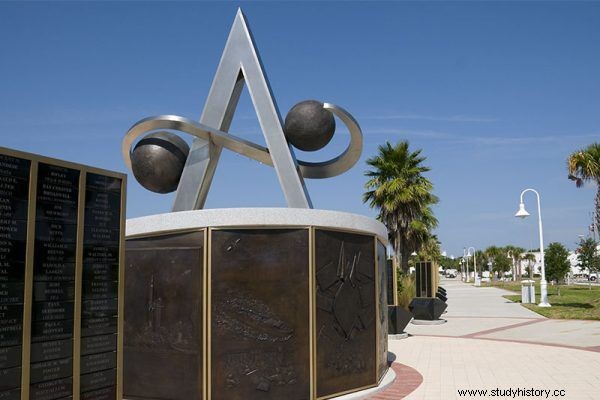
Monument at the entrance to the US Space Walk of Fame in Florida. Who knew that Poles were also among the commemorated people? (source:public domain).
The contribution of Poles to the work on space flights has been appreciated by their American employers. The names of Bekker, Lachocki and Rostafiński were included in the Space Walk of Fame , that is the Avenue of Merit, among other stars - conquerors of interplanetary space.
Without the inventions of our countrymen, the conquest of space would not be possible. The International Space Station for short-wave communication within the ARISS system uses antennas designed and constructed by "our". Who knows what else we will achieve in the future?
Bibliography:
- Marek Borucki, Great Forgotten People. Poles who changed the world, Muza SA 2016.
- Andrzej Grosch, Marcin Mazur, From Poland to the Moon , Cosmic Poland. [access:04/04/2016].
- Krzysztof Lewandowski, Manned vehicles for the study of the Moon and Mars , "Astronautics" 2001, No. 3.
- Jakub Zyska, Polish co-creator of the lunar vehicle , New Strategy. [access:04/04/2016].
